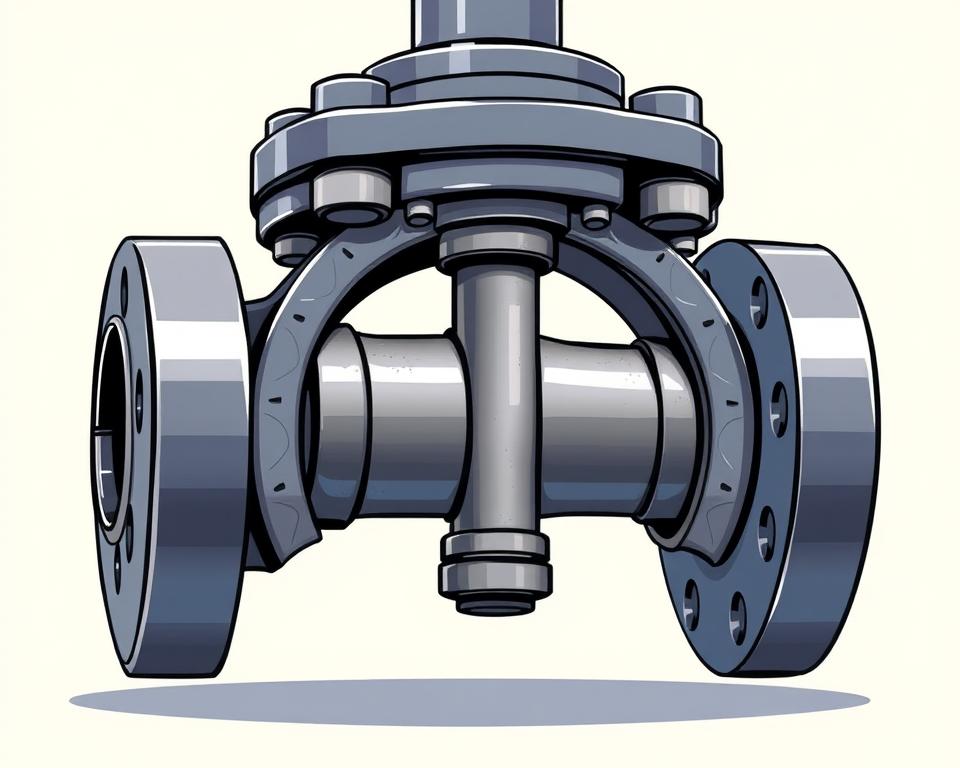Cast Iron Gate Valves: Key Features, Advantages, and Applications
Can one reliable valve reduce maintenance and extend system uptime?
I make and supply Cast Iron Gate Valve Manufacturer at Yaxing Valve, and I back their performance and support for U.S. customers. This line is engineered for longevity in waterworks and light-industrial systems.
Each gate valve has a robust iron body, a machined wedge path, and straightforward handwheel operation. That means reliable shutoff, easy upkeep, and predictable performance in buildings, fire mains, and utility distribution lines.
I support specifiers with fast submittals and transparent details: sizes, end connections, pressure classes, and accessories. We retain cart and preference data (cookies) to make reorders simple.
If you’re seeking a practical swap or economical pick for upcoming projects, compare my cast iron gate benefits with your current hardware to identify life-cycle gains and field fit.
Why Yaxing Valve Cast Iron Gate Valves Deliver Reliable Flow Control
I personally validate each product at Yaxing Valve, so I can recommend our hardware with confidence for demanding U.S. jobsites.
Rugged cast-iron body engineered for industrial performance
Each unit uses a robust cast-iron body to resist deformation under load. Metal-to-metal seating and precise machining ensure tight shutoff when customers need it most.

Flow-optimized design with minimal pressure loss
A streamlined flow path cuts turbulence and pressure drop. This helps pumps operate efficiently while reducing energy consumption.
- Dimensions and testing are validated to ANSI norms and internal criteria.
- I finish stem, wedge, and bonnet interfaces to cut friction and keep handwheel torque steady over years of use.
- Body thickness targets balance durability with manageable handling weight.
- Support docs include tests and standards to help procurement finalize quickly.
| Feature | Benefit | Spec Point |
|---|---|---|
| Robust iron body | High rigidity | Meets dimensional stability targets |
| Flow-optimized gate | Reduced pressure drop | Boosts pump operating efficiency |
| Finished stem/handwheel interfaces | Consistent feel | Stable torque for extended life |
| Documentation | Quicker approvals | ANSI-aligned test reports |
cast iron gate valves: Materials, Design Details, and Performance Essentials
I outline the body, sealing, and stem choices to make selection and ordering straightforward.
Materials: body, bonnet, and wedge
The material stack includes a cast-iron body/bonnet, a precision-machined wedge, and metal-to-metal seating for reliable shutoff in water service and general industry.
Stem/Handwheel configurations
Non-rising stems and inside-screw stems are available for tight spaces. Each screw thread form and packing arrangement is documented in my product details.
Performance Envelope and Standards
I publish qualified pressure and temperature ranges and align end connections to common ANSI standards to help engineers confirm fit without additional drawings.
- Stem/handwheel interface tuned for steady torque.
- Smooth internal geometry reduces headloss.
- Clear series IDs and submittal specs accelerate approvals.
| Component | Material / Type | Limit | Remarks |
|---|---|---|---|
| Body and Bonnet | cast iron | Class 125/approx. 150 psi | ANSI flange sizing; weld/bolt options |
| Wedge | Machined alloy | Service temp −20° to 180°F | Metal-seat interface; smooth finish |
| Valve stem | Non-rising / inside screw | — | Documented thread and packing in datasheet |
| Series | Series YX-100, YX-200 | Sizes 2″–12″ | Part numbers simplify bidding |
Applications, Installation, and Operation in Today’s Industrial Environments
I help contractors and owners place these valves where they perform best in modern loops. My goal is to make selection, installation, and operating checks straightforward so crews wrap up commissioning with no call-backs.
Use cases: waterworks, building systems, general industry
Select full-port units for low restriction across long mains, service feeds, and bypass lines.
In mechanical rooms and industrial loops, I prefer non-rising stem or inside-screw designs when vertical space is tight.
Installation best practices
Protect the valve body during handling; lift at rated points and avoid flange stress. Verify end alignment before final torque to avoid leaks and distortion.
Pick gaskets compatible with your media, follow a cross-torque sequence, and set support spacing to avoid pipeline sag.
Operation and maintenance notes
Place the handwheel for comfortable reach and confirm smooth movement after packing adjustments.
Do periodic under-pressure torque checks, inspect wedge/packing, and verify pressure/temperature versus media. Log tag numbers in your maintenance account and link work orders in your CMMS.
| Topic | Action | When | Benefit |
|---|---|---|---|
| Use-case mapping | Use full-bore on mains; inside-screw/NRS in tight spots | Design stage | Lower headloss; space savings |
| Handling & installation | Lift properly, align, then cross-torque bolts | Field install | Prevents flange stress and leaks |
| Operating checks | Verify handwheel feel; test under pressure | Startup and routine | Consistent operation and shutoff |
| Maintenance tracking | Apply tags and link into CMMS | Ongoing | Speedy parts ID and replacements |
Proper handling and commissioning extend service life and keep the Resilient Seated Gate Valve looking and working like new.
Let’s Specify the Right Iron Gate Valve at Yaxing Valve Today
Send line size, pressure, and flow targets so I can match the right series/type to your duty and temperature envelope.
My concise checklist speeds approvals: end type, inside-screw vs non-rising, and handwheel orientation. I also note stem handwheel and screw details for clear install guidance.
Check the image gallery for high-resolution views with layouts showing clearance and operator reach. Create an account so I can save specs, track valves by tag, and link drawings and a one-page PDF for the field.
Ask for a quick quote and I’ll confirm availability, lead times, alternates, and help you complete the order while you view the gallery. I use cookies only to keep your account session and cart ready.
